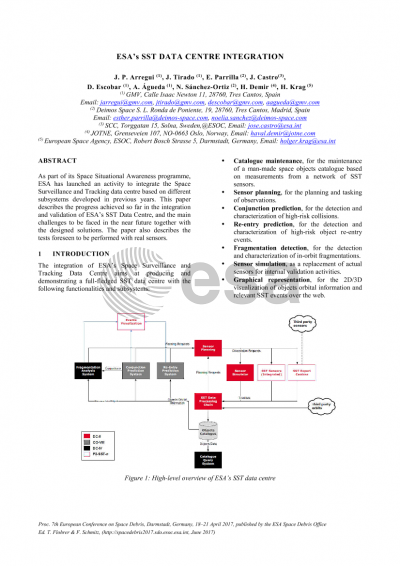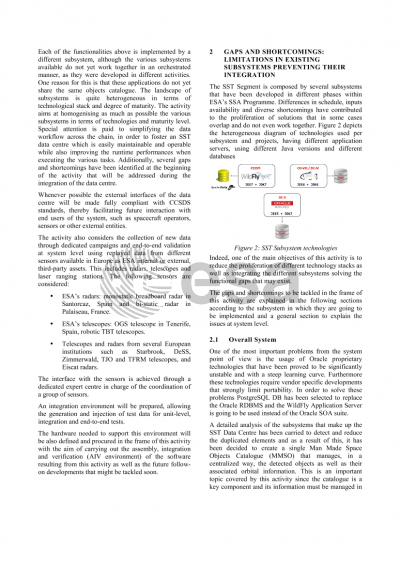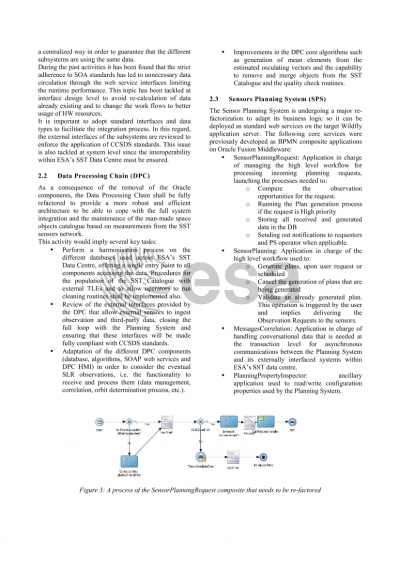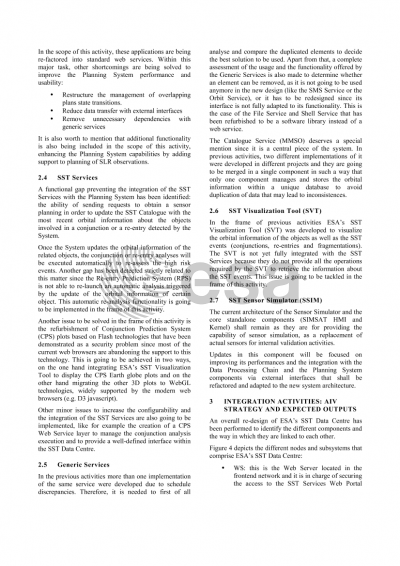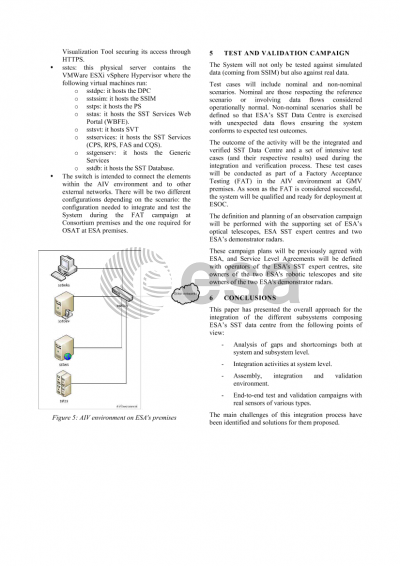Document details

Abstract
As part of its Space Situational Awareness programme, ESA has launched an activity to integrate the Space Surveillance and Tracking data centre based on different subsystems developed in previous years. This integration aims at producing and demonstrating a full-fledged SST data centre with the following functionalities and subsystems:
- Catalogue maintenance, for the maintenance of a man-made space objects catalogue based on measurements from a network of SST sensors.
- Sensor planning, for the planning and tasking of observations.
- Conjunction prediction, for the detection and characterization of high-risk collisions.
- Re-entry prediction, for the detection and characterization of high-risk object re-entry events.
- Fragmentation detection, for the detection and characterization of in-orbit fragmentations.
- Sensor simulation, as a replacement of actual sensors for internal validation activities.
- Graphical representation, for the 2D/3D visualization of objects orbital information and relevant SST events over the web.
Each of the functionalities above is implemented by a different subsystem, although the various subsystems available do not yet work together in an orchestrated manner, as they were developed within different project activities. One reason for this being they do not yet share the same objects catalogue. The landscape of subsystems is quite heterogeneous in terms of technological stack and degree of maturity. The activity aims at homogenising as much as possible the various subsystems in terms of technologies and maturity level. Special attention is paid to simplifying the data workflow across the chain, in order to foster an SST data centre which is easily maintainable and operable while also improving the runtime performances when executing the various tasks. Additionally, several gaps and shortcomings have been identified at the beginning of the activity that will be addressed during the integration of the data centre.
Whenever possible the external interfaces of the data centre will be made fully compliant with CCSDS standards, thereby facilitating future interaction with end users of the system, such as spacecraft operators, sensors or other external entities.
The activity also considers the collection of new data through dedicated campaigns and end-to-end validation at system level using replayed data from different sensors available in Europe as ESA internal or external, third-party assets. This includes radars, telescopes and laser ranging stations. The following sensors are considered:
- ESA’s radars: monostatic breadboard radar in Santorcaz, Spain and bi-static radar in Palaiseau, France.
- ESA’s telescopes: OGS telescope in Tenerife, Spain, robotic TBT telescopes.
- Telescopes and radars from several European institutions such as Starbrook, DeSS, Zimmerwald, TJO and TFRM telescopes, and Eiscat radars.
The interface with the sensors may be either achieved directly or through a dedicated expert centre in charge of the coordination of a group of sensors.
An integration environment will be prepared, allowing the generation and injection of test data for unit-level, integration and end-to-end tests.
The hardware needed to support this environment will be also defined and procured in the frame of this activity with the aim of carrying out the assembly, integration and verification (AIV environment) of the software resulting from this activity as well as the future follow-on developments that might be tackled soon.
This paper will describe the progress achieved so far in the integration and validation of the overall SST Data Centre, and the main challenges to be faced in the near future together with the designed solutions. The paper will also describe the tests foreseen to be performed with real sensors.
Preview
